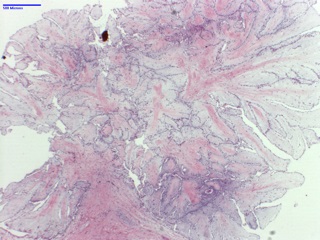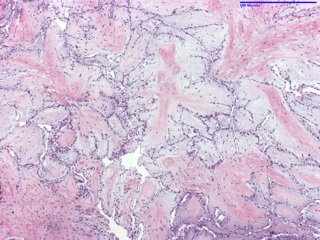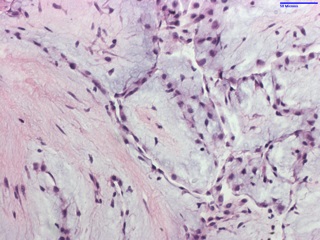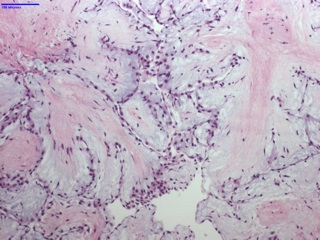Case History
A 36-year-old woman with CVA a month prior is admitted to the hospital with shortness of breath. Echocardiogram reveals a 0.3 cm mitral valve mass that is successfully excised completely.
What is the diagnosis?
A. Fibroma
B. Myxoma
C. Hemangioma
D. Papillary fibroelastoma




Answer: Papillary Fibroelastoma
Papillary fibroelastoma is the most common valve tumor and is often discovered accidentally. When symptomatic, the most common presentation is stroke, followed by TIA and myocardial infarction. Grossly is classically described as “sea anemone”, with central stalk and fronds-like arms projecting outward, appearance that becomes more evident by placing the specimen in water.
Thrombi may occur on their surface and dislodged clots are responsible for embolic events. Most are smaller than 1cm but can be up to several cm large.
Histologically, they are composed primarily by collagen and elastin at the base with abundant mucopolysaccharide stroma, and outer endothelium expressing vimentin, factor VIII and CD34. The vasculature is minimal while myxomas (the main differential) are highly vascular lesions with typical “myxoma” cells and very rarely occur in heart valves.
REFERENCES: PMIDs 28436488, 26046736